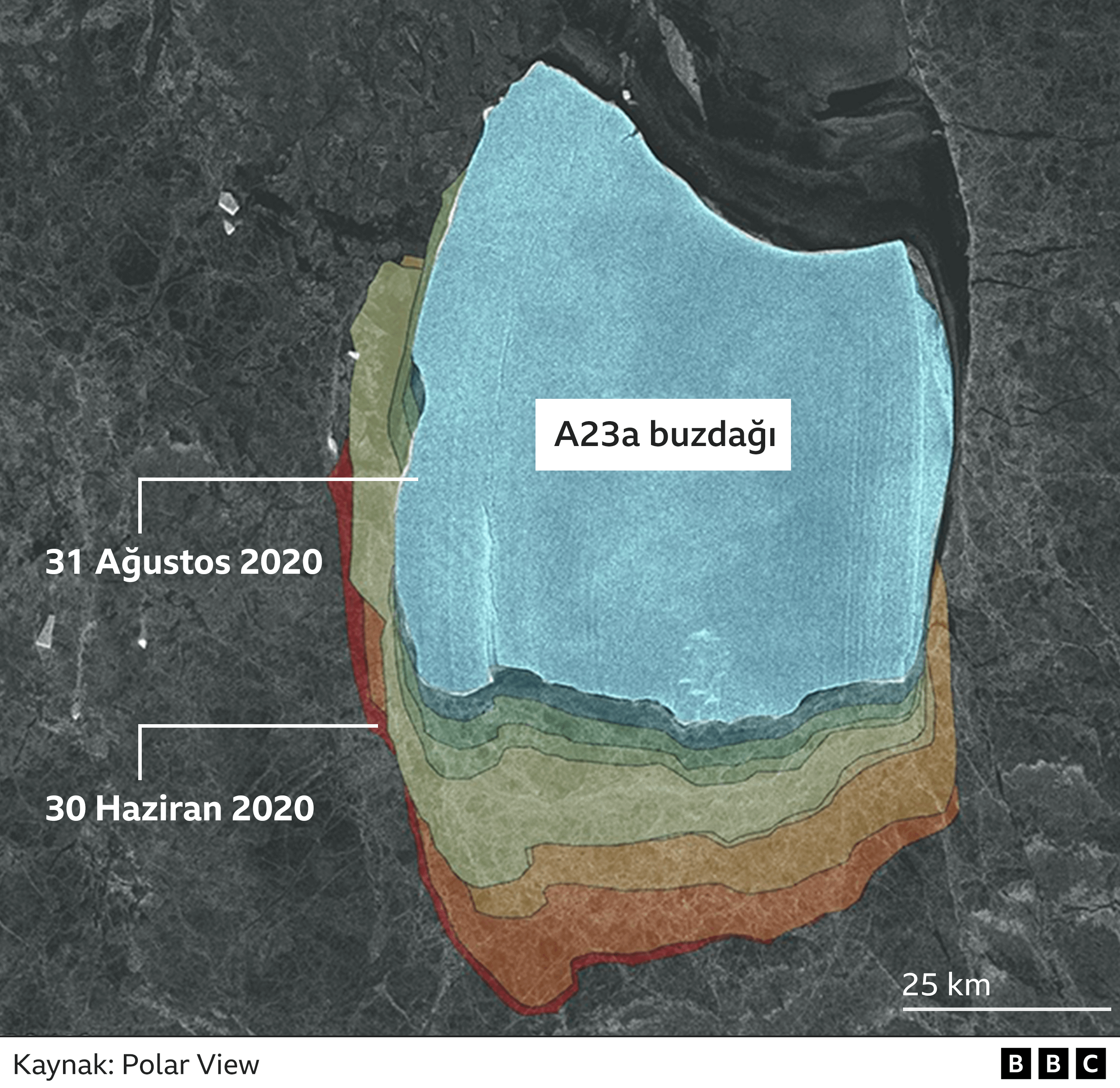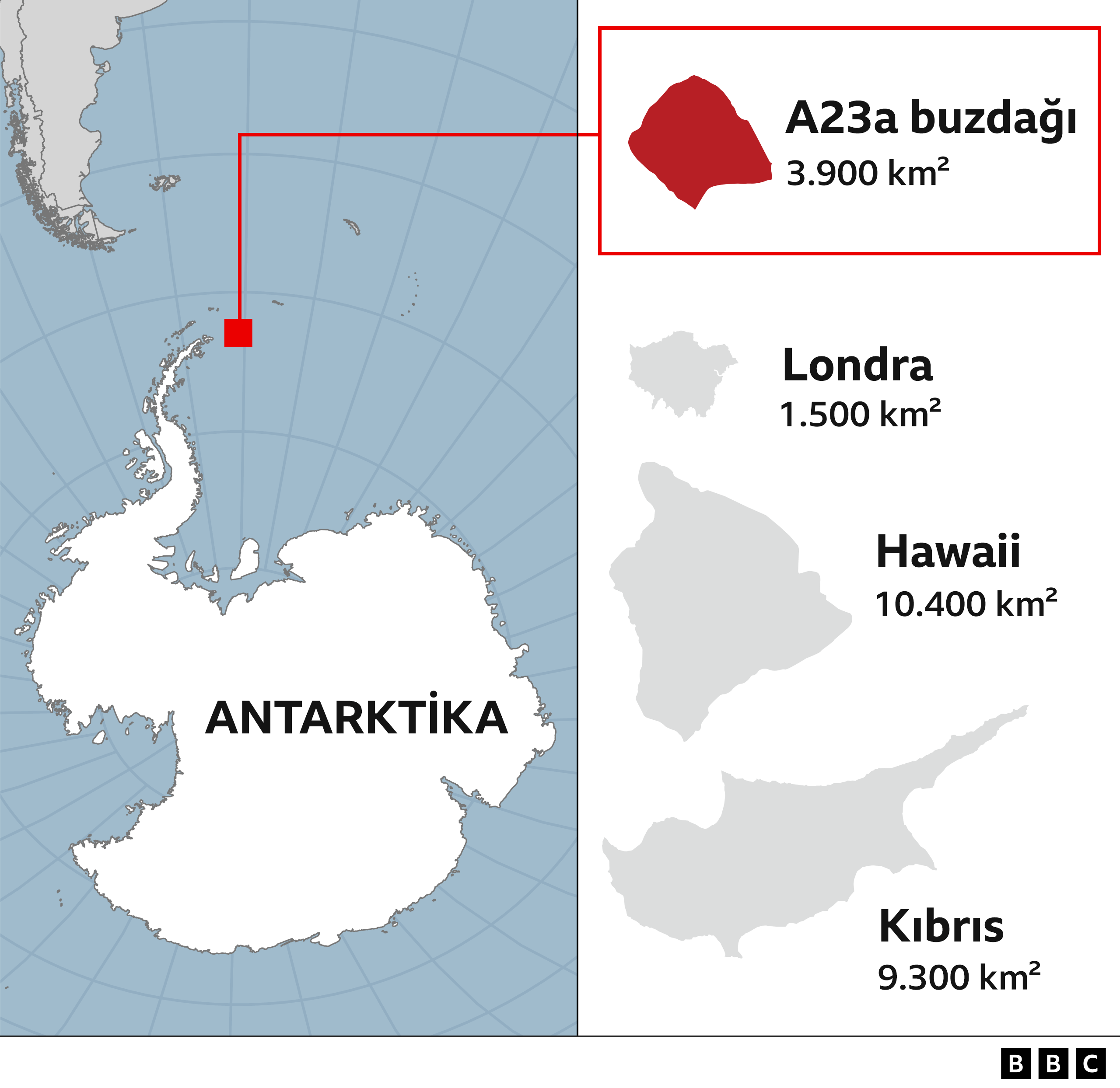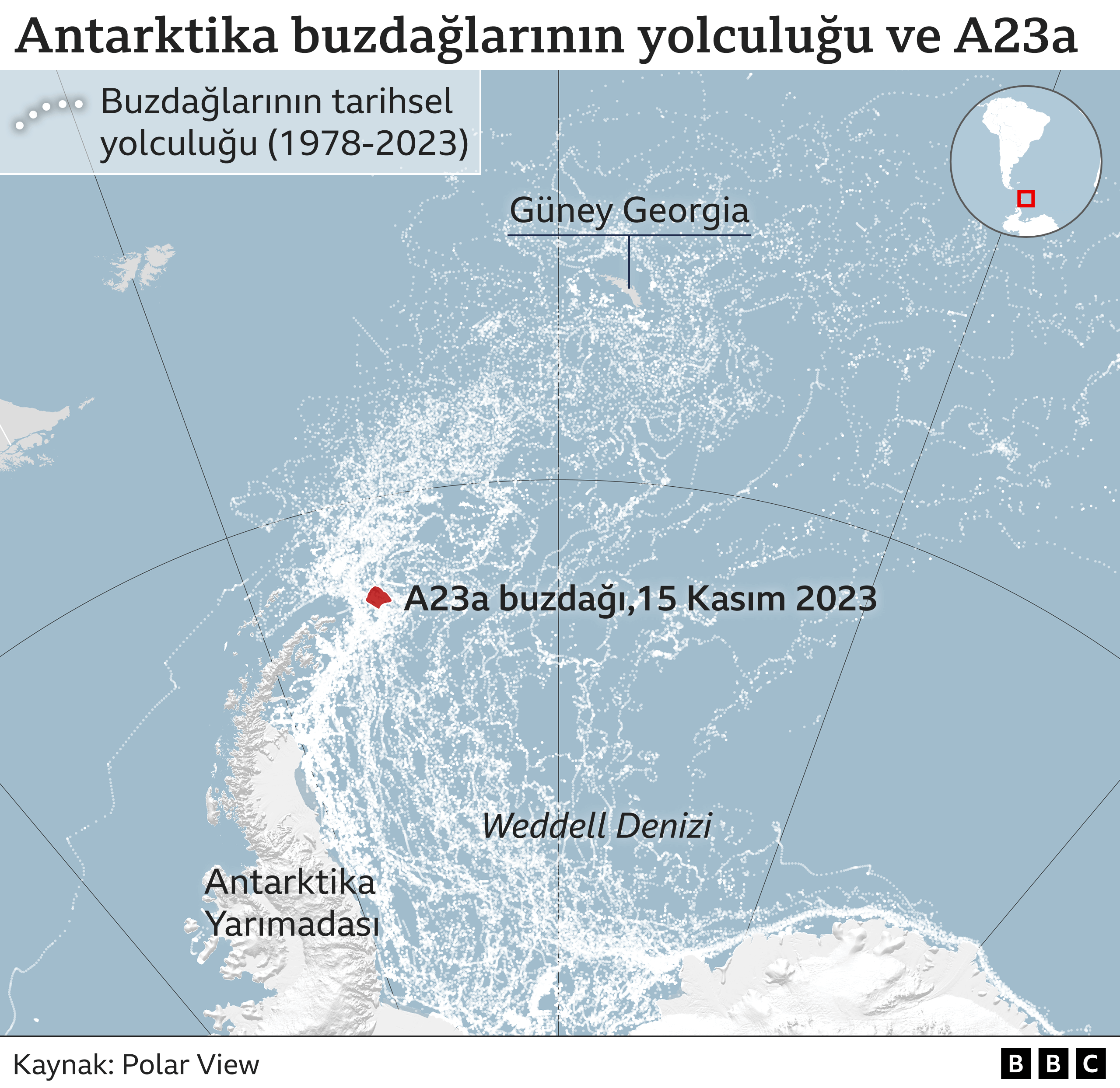
BBC
The world’s largest iceberg, which has been stuck on the ocean floor for more than 30 years, has begun to move.
After the iceberg, called A23a, left the Antarctic coast in 1986, it quickly settled in the Weddell Sea and became an ice island.
This iceberg, with a surface area of about 4,000 square kilometers, is approximately twice the area of London, the capital of England.
The glacier, which began to retreat rapidly last year, is now heading beyond Antarctic waters.
The most impressive aspect of the giant A23a isn’t just its display. This ice layer is about 400 meters thick. In comparison, the Shard in London, the tallest skyscraper in Europe, is only 310 metres.
A23a was once part of the Filchner-Ronne Ice Shelf in Antarctica. At the time, it was home to a Soviet Union research station.
Moscow sent a mission to remove equipment from the base called “Drozhnaya 1” for fear of losing it.
However, the iceberg did not move very far because it was firmly lodged in the bottom mud of the Weddell Sea.

BBC
So why did A23a take action now, nearly 40 years later?
Doctor from the Antarctic research center called the British Antarctic Survey, based in Cambridge, England. Andrew Fleming said he posed the question to his colleagues, asking whether a change in the temperature of the water on the shelf had an impact, but the consensus was “it’s time to act.”
“It’s been around since 1986,” Fleming said. But eventually it will shrink in size (physically) and will lose its grip on the ground and begin to move. “I noticed the first movement in 2020,” he said.
The A23a movement has gained momentum in recent months. The iceberg is drifting by winds and currents and is currently heading towards the northern tip of the Antarctic Peninsula.
 BBC
BBC
A23a, like most of the icebergs in the Weddell sector, is likely to be swept up by the Antarctic Circulation Current, heading toward the South Atlantic along a path known as the “ice corridor.”
This is the same path, with the accompanying water movement and westerly winds, taken by the famous explorer Ernest Shackleton in 1916.
Shackleton lost his ship, the Endurance, when it collided with a glacier.
Shackleton intended to go to South Georgia with his lifeboat. It is also possible to see large icebergs off the coast here.
Whatever their size, all glaciers are doomed to melt and disappear. Scientists will follow A23a’s progress closely.

BBC
If it remains stable in South Georgia, it could cause problems for millions of seals, penguins and other seabirds that live on the island.
The large size of the A23a can disrupt animal hunting methods.
However, it would be a mistake to consider glaciers as mere dangerous creatures. Awareness of its importance to the wider environment is growing.
When these large glaciers melt, they release the mineral dust inside them as they become part of the glaciers that wash away the Antarctic bedrock.
This dust is a food source for organisms that form the base of the ocean food chain.
Doctor from Woods Hole Oceanographic Institution. Catherine Walker said glaciers are a source of life in many ways and a source of many biological activities.
Noting that he was born in the same year as A23a, Walker said: “I sympathize with her, she’s always there for me.”
